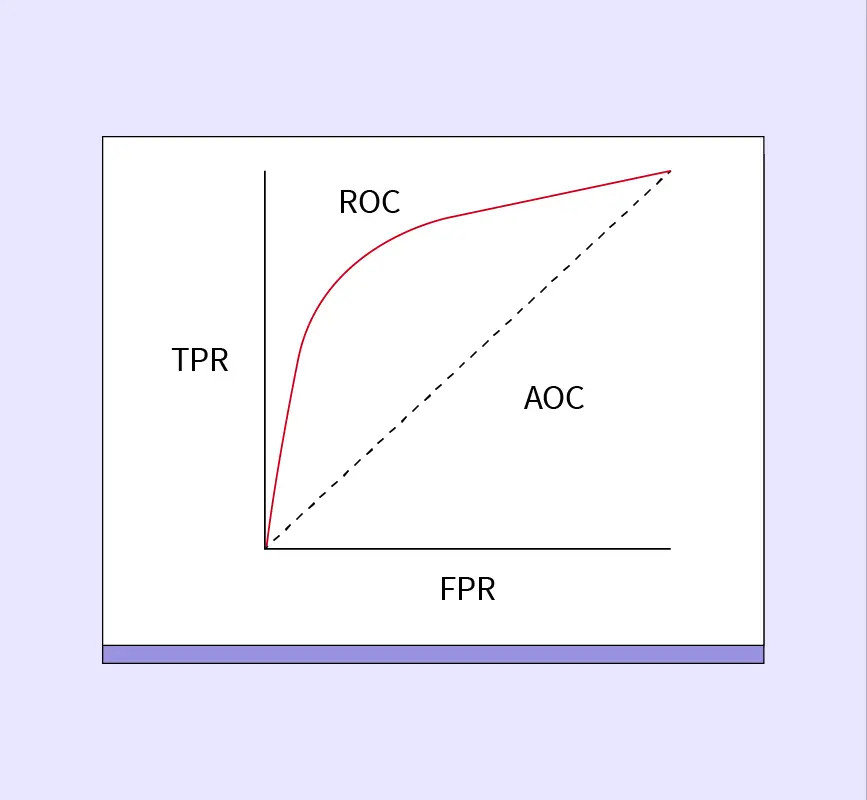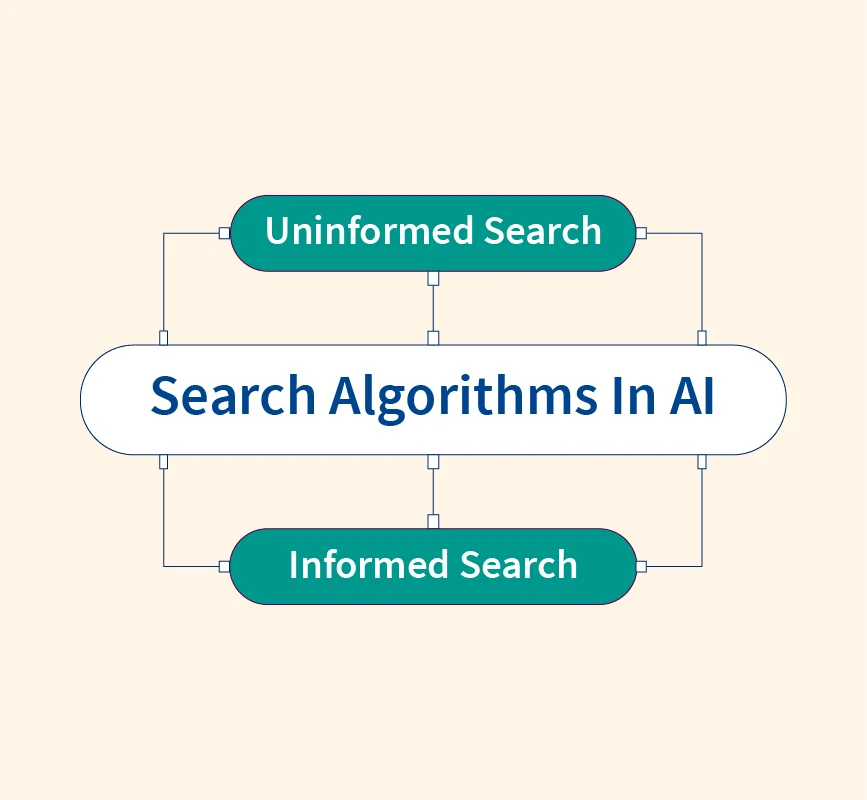Clustering is a foundational technique in machine learning, used to group data into distinct categories based on patterns or similarities. Among the many clustering methods, Gaussian Mixture Model (GMM) stands out for its probabilistic approach to clustering. Unlike deterministic methods like K-Means, GMMs allow for overlapping clusters, making them suitable for more complex data distributions.
The Gaussian distribution, also known as the Normal distribution, is a fundamental concept in statistics and machine learning. It forms the backbone of the Gaussian Mixture Model by describing how data points are distributed.
Key properties of the Gaussian distribution:
- Bell-Shaped Curve: The distribution is symmetric, with the majority of data points concentrated around the mean (center).
- Two Parameters:
- Mean (μ): Determines the center of the distribution.
- Standard Deviation (σ): Controls the spread or width of the curve.
- Probability Density Function (PDF): Defines the likelihood of a random variable taking a particular value.
Mathematically, the Gaussian distribution is expressed as:
$$f(x \mid \mu, \sigma^2) = \frac{1}{\sqrt{2\pi\sigma^2}} \exp\left(-\frac{(x – \mu)^2}{2\sigma^2}\right)$$
Significance in Machine Learning:
- It is widely used to model real-world data that often follows a normal distribution.
- The Gaussian distribution is a key building block in GMMs, enabling flexible and probabilistic data clustering.
What is a Gaussian Mixture Model?
A Gaussian Mixture Model (GMM) is a probabilistic model used in clustering and density estimation. It assumes that the data is generated from a mixture of several Gaussian distributions, each representing a cluster.
Key Components of GMM:
- Means (μ)
- Each Gaussian distribution in the mixture has its own mean, which determines the center of the cluster.
- Covariances (Σ)
- This defines the shape and orientation of each Gaussian distribution, allowing for ellipsoidal clusters.
- Mixing Coefficients (π)
- These are the weights assigned to each Gaussian distribution, indicating the proportion of data belonging to each cluster.
- The sum of all mixing coefficients is 1.
Conceptual Understanding:
- GMM treats each cluster as a Gaussian distribution and fits these distributions to the data using probabilities.
- Unlike hard clustering methods (e.g., K-Means), GMM provides soft clustering, where a data point can belong to multiple clusters with different probabilities.
Gaussian Mixture Model vs. K-Means Clustering
Gaussian Mixture Models (GMM) and K-Means are popular clustering techniques, but they differ significantly in their approaches and applications. Below is a detailed comparison:
Overview of K-Means Clustering:
- K-Means is a hard clustering algorithm that partitions data into distinct, non-overlapping clusters.
- It minimizes the distance between data points and their respective cluster centroids.
- Clusters are spherical and equally sized in most cases.
Key Differences between GMM and K-Means
| Feature | Gaussian Mixture Model (GMM) | K-Means Clustering |
| Clustering Approach | Probabilistic (soft clustering) | Deterministic (hard clustering) |
| Cluster Shape | Can handle ellipsoidal clusters with varying sizes | Assumes spherical, equally-sized clusters |
| Assignment | Data points have probabilities of belonging to clusters | Data points are assigned to a single cluster |
| Flexibility | Models complex data distributions | Works best with well-separated, simple data |
| Parameters | Incorporates means, covariances, and mixing coefficients | Only considers cluster centroids |
Advantages of Each Method
GMM Advantages:
- Handles overlapping clusters better.
- Provides soft clustering, allowing for more flexible data assignments.
- Suitable for modeling real-world data with complex distributions.
K-Means Advantages:
- Faster and computationally less expensive.
- Simple to implement and interpret.
- Effective for large datasets with well-defined clusters.
Scenarios where GMM is Preferred over K-Means
- When clusters have overlapping boundaries.
- In cases where the data points follow a Gaussian distribution.
- Applications requiring probabilistic assignments, such as density estimation or anomaly detection.
Mathematical Formulas of Gaussian Mixture Models
Gaussian Mixture Models (GMMs) rely on the mathematical foundation of the Gaussian distribution and its combination into a mixture model. Here’s an explanation of the key components and formulation:
1. Probability Density Function of a Gaussian Distribution
The Gaussian distribution is mathematically defined as:
$$f(x \mid \mu, \sigma^2) = \frac{1}{\sqrt{2\pi\sigma^2}} \exp\left(-\frac{(x – \mu)^2}{2\sigma^2}\right)$$
Where:
- $x$ is the data point,
- $μ$ is the mean (center of the distribution),
- $\sigma^2$ is the variance (spread of the distribution).
2. Mixture of Gaussians
In GMM, the data is modeled as being generated from a mixture of $K$ Gaussian distributions. The mixture model is expressed as:
$$p(x) = \sum_{k=1}^{K} \pi_k N(x \mid \mu_k, \Sigma_k)$$
Where:
- $\pi_k$ : Mixing coefficient for the $k$-th Gaussian component (weights summing to 1).
- $N(x \mid \mu_k, \Sigma_k)$ : Gaussian distribution with mean $\mu_k$ and covariance $\Sigma_k$
- $\Theta$ : Parameters of the GMM $(\pi_k, \mu_k, \Sigma_k)$
3. Parameters in GMM
- Means $(\mu_k)$ : Define the centers of the clusters.
- Covariances $(\Sigma_k)$ : Describe the shape and orientation of each Gaussian component.
- Mixing Coefficients $\pi_k$ : Represent the proportion of data belonging to each Gaussian component.
4. Likelihood Function
The likelihood of the observed data is the joint probability of all data points:
$$L(\Theta \mid X) = \prod_{i=1}^N p(x_i \mid \Theta)$$
Where $N$ is the number of data points, maximizing this likelihood is the key to finding the optimal parameters for the GMM.
The Expectation-Maximization (EM) Algorithm
The Expectation-Maximization (EM) algorithm is the backbone of Gaussian Mixture Models, used for estimating the parameters $(\mu_k, \Sigma_k, \pi_k)$ of the Gaussian components. It iteratively refines these parameters to maximize the likelihood of the observed data.
Role of EM in GMM
- EM finds the parameters of the Gaussian components by alternating between two steps:
- E-Step (Expectation): Assigns probabilities of each data point belonging to each Gaussian component.
- M-Step (Maximization): Updates the parameters of the Gaussian components to maximize the likelihood.
Detailed Steps of the EM Algorithm
1. Initialization
Randomly initialize the parameters $(\mu_k, \Sigma_k, \pi_k)$ for $K$ Gaussian components.
2. E-Step (Expectation)
Calculate the responsibility $r_{ik}$ of each Gaussian component $k$ for every data point $x_i$
$$r_{ik} = \frac{\sum_{j=1}^K \pi_j \cdot N(x_i \mid \mu_j, \Sigma_j)}{\pi_k \cdot N(x_i \mid \mu_k, \Sigma_k)}$$
This represents the probability of $x_i$ belonging to the $k-th$ Gaussian component.
3. M-Step (Maximization)
Update the parameters based on the responsibilities:
Mixing Coefficient $(\pi_k)$:
$$\pi_k = \sum_{i=1}^N r_{ik}$$
Mean $(\mu_k)$:
$$\mu_k = \frac{\sum_{i=1}^N r_{ik}}{\sum_{i=1}^N r_{ik} \cdot x_i}$$
Covariance $(\Sigma_k)$:
$$\Sigma_k = \sum_{i=1}^N r_{ik} \cdot (x_i – \mu_k)(x_i – \mu_k)^T$$
4. Convergence Criteria
Repeat the E-Step and M-Step until the parameters converge, usually determined by a small change in the log-likelihood function.
Key Characteristics of EM Algorithm:
- It guarantees convergence but not necessarily to the global maximum (may get stuck in local optima).
- Initialization of parameters significantly impacts the final solution.
Implementing Gaussian Mixture Models in Python
Gaussian Mixture Models can be easily implemented in Python using libraries like scikit-learn. Here’s a step-by-step guide:
Import Required Libraries
Begin by importing the necessary libraries for data manipulation, visualization, and modeling.
import numpy as np
import matplotlib.pyplot as plt
from sklearn.mixture import GaussianMixture
from sklearn.datasets import make_blobsGenerate or Load Data
For this example, we’ll generate synthetic data using the make_blobs function.
# Generate synthetic data
X, y_true = make_blobs(n_samples=300, centers=3, cluster_std=1.0, random_state=42)
# Visualize the data
plt.scatter(X[:, 0], X[:, 1], s=30)
plt.title("Input Data")
plt.show()Initialize the GMM Model
Use GaussianMixture from sklearn.mixture and specify the number of components (clusters).
# Initialize the GMM model
gmm = GaussianMixture(n_components=3, random_state=42)Fit the Model to the Data
Train the GMM model using the fit method.
# Fit the model
gmm.fit(X)Predict the Cluster Assignments
Use the predict method to assign data points to clusters.
# Predict cluster labels
labels = gmm.predict(X)
# Visualize the clusters
plt.scatter(X[:, 0], X[:, 1], c=labels, cmap='viridis', s=30)
plt.title("GMM Clustering Results")
plt.show()Evaluate the Model
You can evaluate the quality of clustering using metrics like the Bayesian Information Criterion (BIC) or Akaike Information Criterion (AIC).
print("BIC:", gmm.bic(X))
print("AIC:", gmm.aic(X))Visualize the Gaussian Components
Plot the Gaussian ellipses to represent each cluster’s shape and spread.
# Plot the Gaussian components
plt.scatter(X[:, 0], X[:, 1], c=labels, cmap='viridis', s=30)
for mean, covar in zip(gmm.means_, gmm.covariances_):
plt.scatter(mean[0], mean[1], c='red', s=100, marker='x')
plt.title("GMM with Gaussian Components")
plt.show()This code provides a practical demonstration of how GMM can be applied for clustering tasks. Let me know if this section aligns with your expectations or if you need further enhancements. Should I proceed with the advantages and limitations of GMM?
Complete Python Code
# Importing required libraries
import numpy as np
import matplotlib.pyplot as plt
from sklearn.mixture import GaussianMixture
from sklearn.datasets import make_blobs
# Step 1: Generate synthetic data
X, y_true = make_blobs(n_samples=300, centers=3, cluster_std=1.0, random_state=42)
# Visualize the data
plt.scatter(X[:, 0], X[:, 1], s=30)
plt.title("Input Data")
plt.xlabel("Feature 1")
plt.ylabel("Feature 2")
plt.show()
# Step 2: Initialize the GMM model
gmm = GaussianMixture(n_components=3, random_state=42)
# Step 3: Fit the model to the data
gmm.fit(X)
# Step 4: Predict cluster labels
labels = gmm.predict(X)
# Visualize the clustering results
plt.scatter(X[:, 0], X[:, 1], c=labels, cmap='viridis', s=30)
plt.title("GMM Clustering Results")
plt.xlabel("Feature 1")
plt.ylabel("Feature 2")
plt.show()
# Step 5: Evaluate the model
bic = gmm.bic(X)
aic = gmm.aic(X)
print(f"BIC: {bic}")
print(f"AIC: {aic}")
# Step 6: Visualize Gaussian components
plt.scatter(X[:, 0], X[:, 1], c=labels, cmap='viridis', s=30)
plt.title("GMM with Gaussian Components")
for mean, covar in zip(gmm.means_, gmm.covariances_):
plt.scatter(mean[0], mean[1], c='red', s=100, marker='x', label="Mean")
plt.xlabel("Feature 1")
plt.ylabel("Feature 2")
plt.legend()
plt.show()Advantages and Limitations of Gaussian Mixture Models
Gaussian Mixture Models (GMMs) offer several advantages, making them a popular choice for clustering and density estimation. However, they also have some limitations that need consideration when applying them to real-world problems.
Advantages of GMMs
- Flexibility in Modeling Complex Data Distributions
- GMMs can represent a wide range of data patterns by combining multiple Gaussian distributions.
- They handle overlapping clusters effectively, accommodating varying shapes and sizes.
- Soft Clustering Capabilities
- Unlike K-Means, GMMs assign probabilities to data points for belonging to multiple clusters.
- This probabilistic approach provides richer insights, especially in cases where clusters are not clearly separated.
- Applicability to Diverse Fields
- GMMs are versatile and can be applied to density estimation, anomaly detection, and more.
- They work well in scenarios requiring probabilistic modeling, such as speech recognition and image segmentation.
Limitations of GMMs
- Sensitivity to Initialization
- The performance of GMMs depends on the initial parameters (means, covariances, and mixing coefficients).
- Poor initialization may lead to convergence at local optima, affecting the quality of clustering.
- Computational Complexity
- GMMs involve iterative optimization using the Expectation-Maximization (EM) algorithm, which can be computationally intensive.
- This complexity increases with larger datasets and a higher number of components.
- Challenges with High-Dimensional Data
- In high-dimensional datasets, GMMs may face difficulties due to the curse of dimensionality.
- Covariance matrices become more complex, increasing the risk of overfitting and slowing down computations.
Despite these limitations, GMMs remain a powerful tool for clustering and density estimation, especially in datasets with overlapping and complex structures. Proper initialization, dimensionality reduction, and model regularization can mitigate some of these challenges.
Conclusion
Gaussian Mixture Models (GMMs) play a pivotal role in machine learning by offering a probabilistic approach to clustering and density estimation. By modeling data as a combination of multiple Gaussian distributions, GMMs can effectively represent complex, multimodal datasets where traditional clustering methods like K-Means may fall short. This flexibility allows GMMs to handle overlapping clusters and capture intricate data structures, making them invaluable in various applications such as customer segmentation, anomaly detection, and image processing. Understanding and implementing GMMs equip practitioners with a robust tool for uncovering hidden patterns and making informed decisions based on nuanced data insights.
Frequently Asked Questions (FAQs)
1. What is a Gaussian Mixture Model (GMM) and why is it used?
A Gaussian Mixture Model (GMM) is a probabilistic model that represents data as a mixture of multiple Gaussian distributions. It is commonly used for clustering, density estimation, and anomaly detection. Unlike traditional clustering methods, GMM provides soft assignments, meaning each data point belongs to multiple clusters with varying probabilities.
2. How does GMM differ from K-Means clustering?
GMM differs from K-Means in that it assigns probabilities to each data point instead of forcing a hard assignment to one cluster. GMM accounts for covariance structures, allowing clusters to take elliptical shapes, whereas K-Means assumes clusters are spherical. This makes GMM more flexible and suitable for complex datasets where clusters may overlap.
3. How does the Expectation-Maximization (EM) algorithm train GMM?
The Expectation-Maximization (EM) algorithm trains GMM by iteratively estimating cluster probabilities and updating model parameters. In the Expectation step, it calculates the probability of each data point belonging to each Gaussian component. In the Maximization step, it updates the mean, covariance, and weight of each component to maximize the likelihood of the data. This process repeats until the model converges to a stable solution.
4. How do you determine the number of clusters in GMM?
The number of clusters in GMM is typically determined using model selection criteria such as the Bayesian Information Criterion (BIC) or the Akaike Information Criterion (AIC). These metrics evaluate the trade-off between model complexity and goodness of fit, helping to choose an optimal number of Gaussian components without overfitting the data.
5. What are the real-world applications of GMM?
GMM is widely used in applications such as anomaly detection in fraud prevention and medical diagnosis, speech recognition by modeling phoneme distributions, image segmentation for object detection, and customer segmentation in finance and marketing. Its ability to handle overlapping clusters makes it a powerful tool in machine learning and artificial intelligence.


